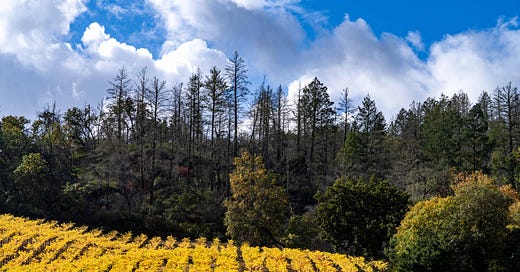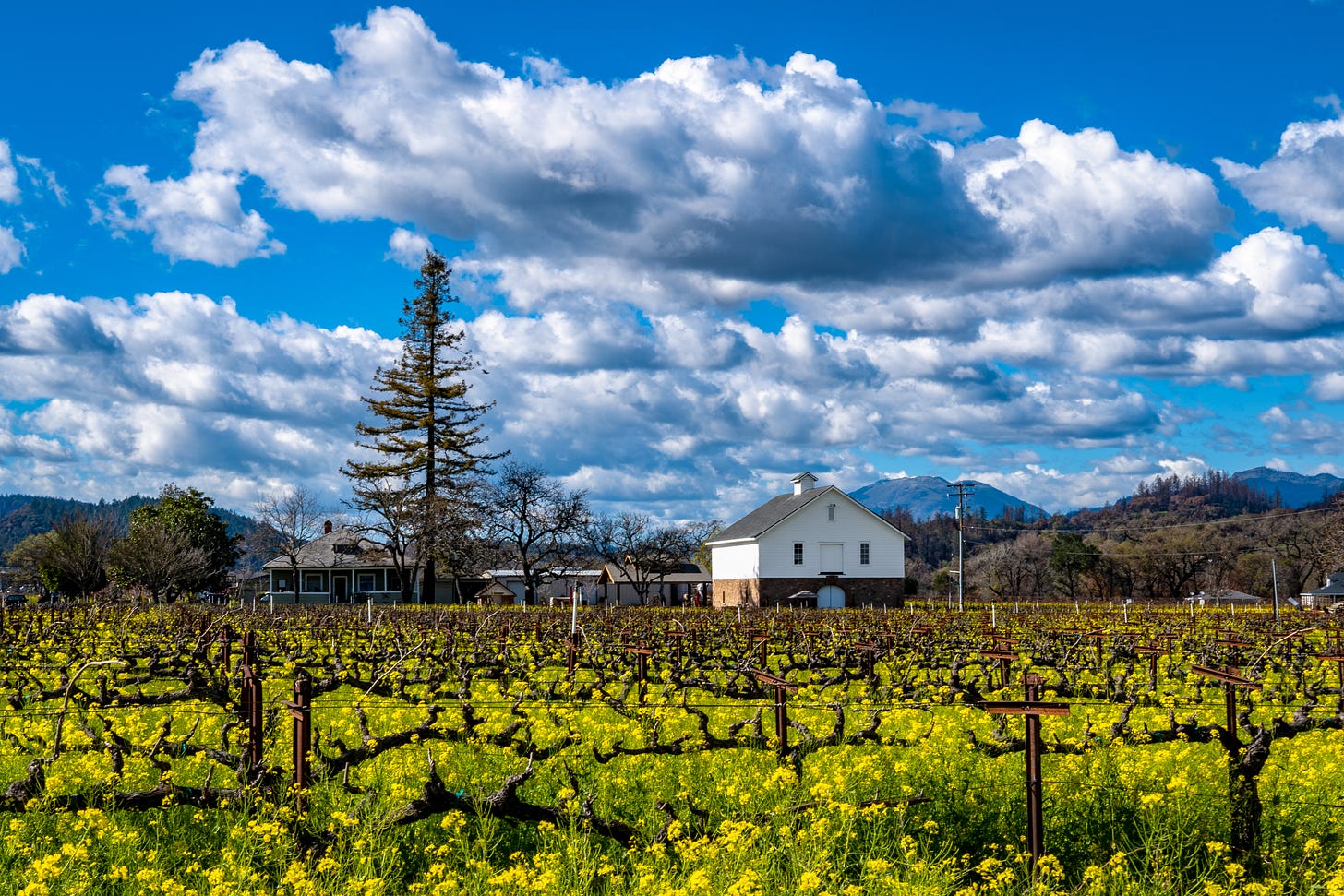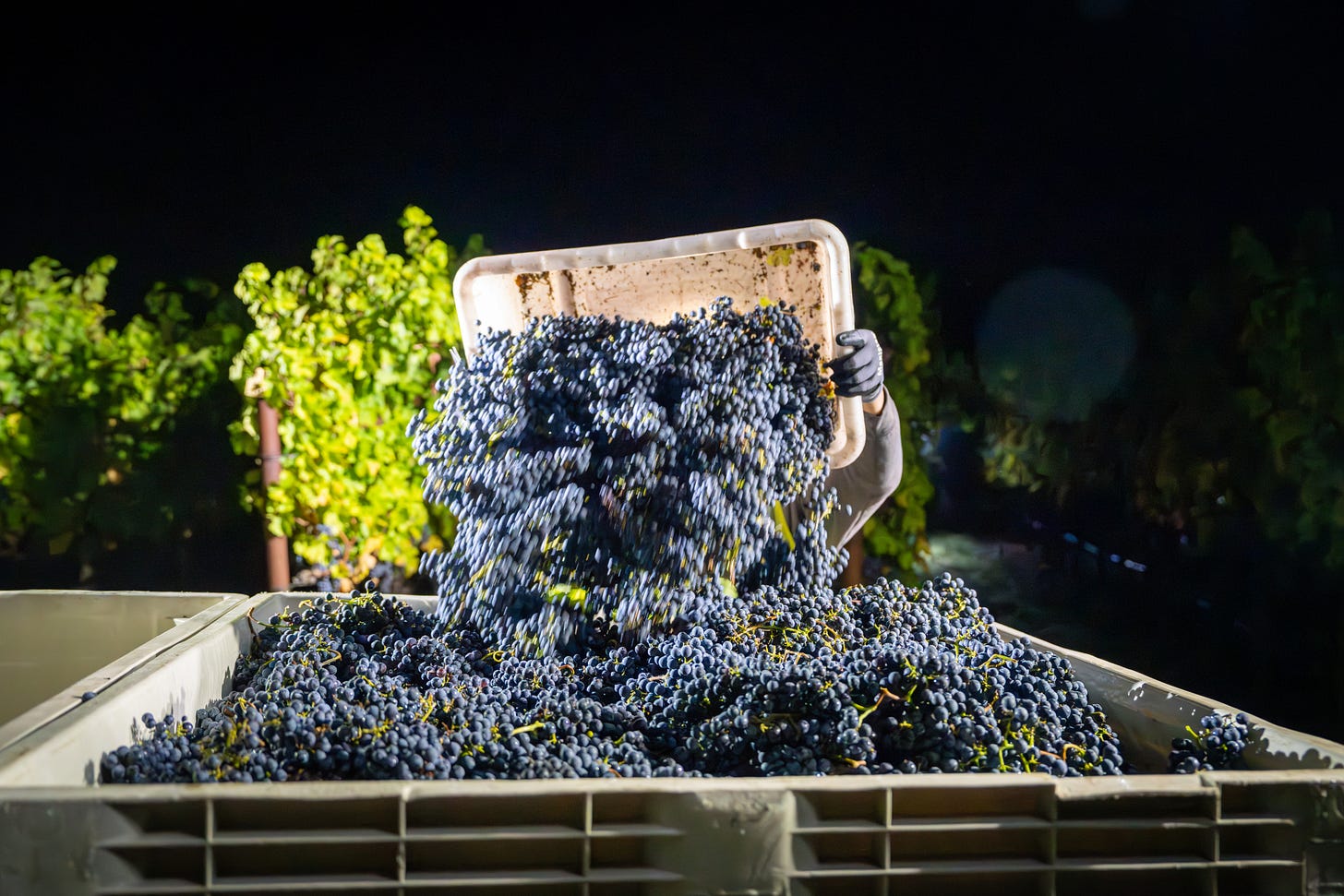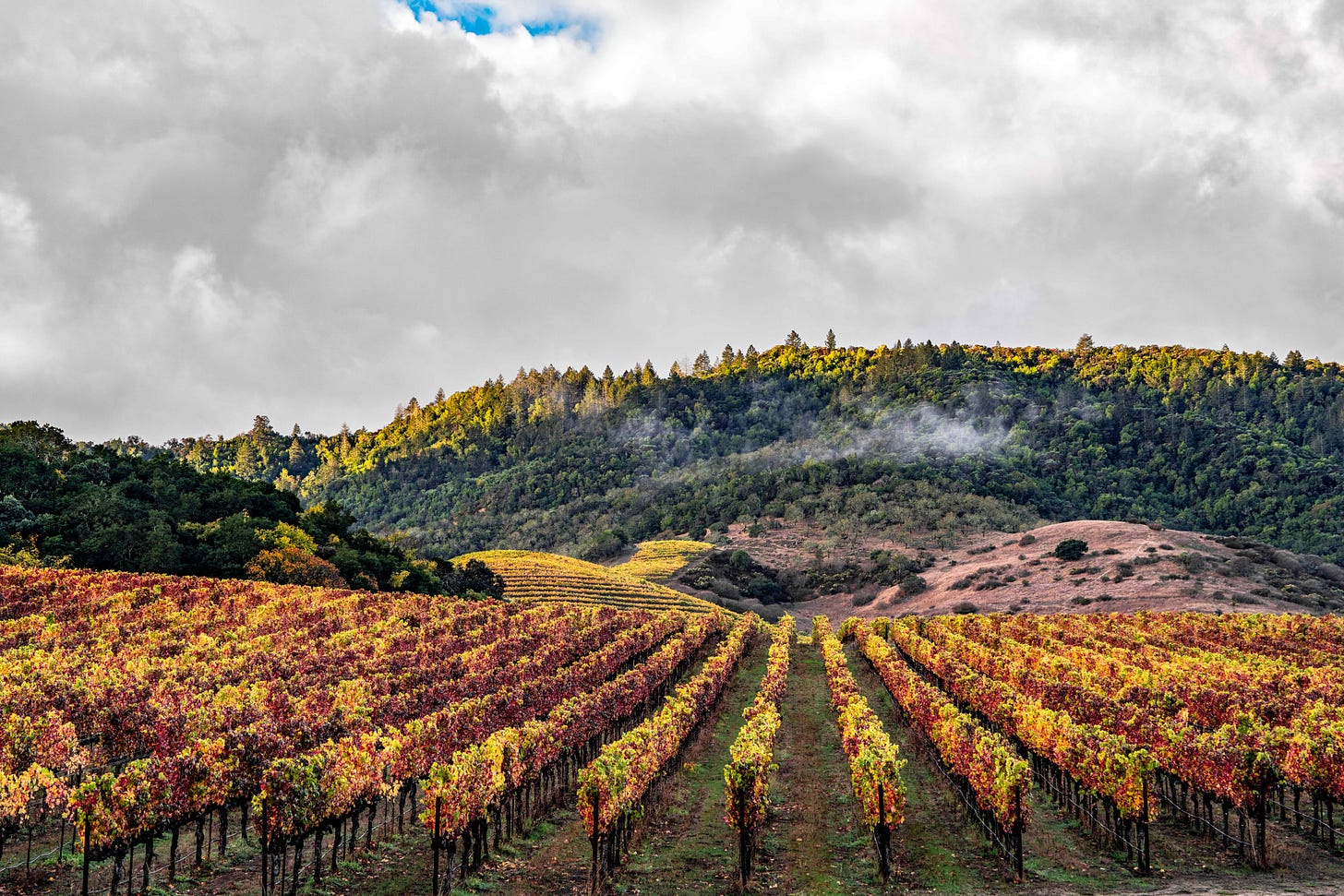This article is part of our ongoing series examining Napa Valley's wine industry. In previous installments we explored the far-reaching consequences of supply and demand imbalances, and we have highlighted escalating legal conflicts, community tensions and business failures. We also discussed how flawed or incomplete data can undermine strategic decision-making and affect long-term sustainability. Additionally, we considered the rising probability of mergers and acquisitions and the declining impact of China on tourism and wine consumption. Please take a moment to fill out our short survey at the end.
NAPA VALLEY, Calif. — Determining the number of wineries in Napa Valley can yield different numbers, depending on whom you ask. The Napa Valley Vintners association lists just over 500 member wineries, while the Napa Wine Project has documented visits to more than 1,100 both physical and “virtual” wineries.
The exact number of wineries in the Napa Valley is a hotly debated and divisive issue, with varied opinions on whether the region is saturated or still has room to grow. The debate hinges on whether to consider only physical wineries or all entities that sell Napa Valley wine brands. This article explores the potential of utilizing Type 02 licenses as a benchmark for quantifying wineries and making regional comparisons.
While a previous Napa Valley Features article estimated that there are probably more than 3,000 locations in Napa Valley where wine can be tasted and sold, in California, to legally make and sell wine, besides meeting federal regulations, one must secure a Type 02 “winegrower” license from the state’s Department of Alcoholic Beverage Control. Currently the ABC lists more than 1,841 Type 02 licensees in Napa County and 6,692 in the entire state, which is 27.5%.
The use of Type 02 licenses as a yardstick is also contentious. These permits allow for operations beyond the conventional brick-and-mortar winery, encompassing warehouses, offices and tasting rooms. Consequently, they can provide a distorted representation of the actual count of physical wineries. Conversely, relying solely on Type 02 licenses might not accurately reflect the number of wine brands, since one license can encompass multiple brands. This is often seen where a single wine producer has several labels or where “custom-crush” clients use another winery’s facilities (“host winery”) to produce wine, selling it under different, less-costly licenses. These arrangements are sometimes dubbed “virtual wineries,” but this is a misnomer because these operations do not fit under the current “winery” regulatory definition.
However, since wine-growing regions in California experience similar industry dynamics, Type 02 licenses provide a useful metric for evaluating the density of wine production within and across regions.
Despite Napa County's modest footprint (just 0.48% of California's total land area, with California spanning 155,812.8 square miles and Napa County 752 square miles), the region's viticultural output is important but modest in scale. It grows approximately 8% of the state's wine grapes (in 2022, Napa County's vineyards accounted for 46,128 bearing acres, compared to the 575,000 bearing acres throughout California) and produces about 4% of California's total wine volume annually. Yet it holds a disproportionate 27.5% of the state's Type 02 licenses. This uneven distribution of Type 02 licenses highlights Napa Valley's allure in the wine industry. At the same time, it necessitates an honest conversation about whether there is an excessive concentration of wine producers and what that means for Napa's future.
Summary of information found in this article:
As of 2023, Napa County has 1,841 Type 02 winery licenses, marking a more than 300% increase since 2008.
Estimates of the total number of physical wineries in Napa Valley range widely — from 500 to more than 1,000.
A Type 02 license is mandatory for any wine producer to make and sell wine legally in the state.
Other licenses — non-Type 02 — exist that allow the selling of wine but preclude the making of wine.
Type 02 licenses may not reflect the actual count of physical wineries yet may serve as a reliable metric for assessing trends and for regional comparisons.
Despite accounting for just 4% of California’s wine production, Napa County holds over 27.5% of the state’s Type 02 licenses.
Within Napa County, the city of Napa has 51% of Type 02 licenses, followed by St. Helena with 25% and Calistoga with 10%.
A single Type 02 license can encompass numerous wine labels, suggesting that Napa Valley's unique label count extends into the many thousands.
In 1978, U.S. alcohol laws were revised to permit each adult to produce up to 100 gallons of wine per year for personal use without a license.
The increase in Type 02 licenses in Napa Valley underscores the region's wine industry appeal but also points to potential risks of market saturation and subsequent vulnerabilities.
To those who might argue that the influence of many very small wine producers in Napa County is negligible due to their size or that their limited production is primarily for personal circles, two points merit consideration. First, the prevalence of small-scale winemakers is a common scenario across wine regions. Second, any adult in the United States is legally permitted to produce up to 100 gallons of wine annually for personal use without a license, permit or authorization, whether in their garage, kitchen or backyard.
Anyone can make wine
From the Prohibition era to modern times, the regulatory landscape governing home winemaking in the United States has undergone significant shifts. The 18th Amendment ushered in Prohibition in 1920, severely curtailing the production and consumption of alcoholic beverages. However, a 1920 ruling from the Internal Revenue Bureau — the precursor to the modern Internal Revenue Service — permitted homemade wines and ciders to contain more than 0.5% alcohol as long as they were consumed at home and deemed "non-intoxicating."
The repeal of Prohibition through the 21st Amendment in 1933 set the stage for new federal regulations, including the Federal Alcohol Administration Act of 1935. Though aimed chiefly at commercial operations, this legislation also indirectly supported home winemaking.
The legal landscape took another decisive turn in 1978, when President Jimmy Carter signed H.R. 1337 into law. This legislation not only legalized home brewing of beer but also clarified federal guidelines for home winemaking. The law lifted federal restrictions and excise taxes on small quantities of homemade wine, building on the allowances outlined in the Code of Federal Regulations.
Today the U.S. Alcohol and Tobacco Tax and Trade Bureau allows an individual adult to produce up to 100 gallons of wine per year for personal use, a limit that rises to 200 gallons for households with two or more adults. To put that into perspective, 200 gallons equates to approximately 84 cases, or 1,008 bottles, of wine — allowing families to produce and consume nearly three bottles of their own wine per day. Anyone can make modest quantities of wine, but to make and sell wine requires a Type 02.
How many Type 02 licenses are there?
As of Nov. 5, the California Department of Alcoholic Beverage Control reports 6,692 Type 02 license-holders statewide, reflecting a 17% growth since 2016. Napa County alone has seen its number of Type 02 winery licenses grow to more than 1,800 in 2023, a more than 300% increase since 2008, when it had 557.

A Type 02 license, also known as a "Winegrower license,” is essential for making and selling wine in California. Issued by the ABC, this license authorizes a range of activities that include hosting wine tastings, selling wine to licensed sellers, selling directly to consumers, producing a specific type of brandy, offering samples to stores under certain conditions and even having a wine importer's license. It is important to note that a Type 02 license is a privilege, not a right, and can be revoked for violations. However, having a Type 02 does not necessitate owning a physical winery.
Napa County has stringent regulations for building and operating a physical winery, inspired by the Agricultural Preserve of 1968 and rooted in its "Winery Definition Ordinance" enacted in 1989. The ordinance governs numerous aspects of a winery's operation and design, such as size, location, signage, and the nature of tours, tastings and events. Specifically, wineries must be situated on at least a 10-acre parcel, and no more than 25% of the site can be occupied by winery facilities. Cultural and social events unrelated to wine education, such as weddings, are prohibited, except for a few that are “grandfathered,” including Beringer Vineyards, Merryvale Vineyards, V. Sattui Winery, Charles Krug Winery and Brasswood Estate.
To support smaller producers, Napa County introduced a Micro-Winery Ordinance in 2022. Effective since May 5, 2022, the ordinance streamlines the winery permit process for small producers by shifting approval from the planning commission to the zoning administrator, thus potentially reducing costs. Nevertheless, micro-wineries must adhere to specific guidelines, including production limits of between 201 and 5,000 gallons of wine per year and a focus on estate-grown fruit. These micro-wineries also must obtain a Type 02 license.
Other types of permits exist for businesses related to the wine industry but not involved in production. As of 2023, Napa County had 125 Type 41 licenses allowing beer and wine sales in restaurants and 115 Type 47 licenses for selling beer, wine and spirits. There were also 594 Type 20 licenses and 590 Type 17 licenses. All of these licenses allow the selling — but not the making — of wine. For example, “virtual wineries” often have a “host winery” (the holder of a Type 02) make the wine that they then sell using a 17, 20 or other less-costly license.
Napa County's high concentration of Type 02 licenses
California is responsible for an estimated 85% of all wine produced in the United States, while Napa Valley accounts for just 4% of the state's wine production. According to the most recent data, California has approximately 6,692 Type 02 license holders, with 1,841 of them in Napa County. If the distribution of Type 02 licenses were strictly based on production volume, one would expect only about 280 such licenses in Napa Valley (4% of 6,979). However, Napa County is home to more than 27.5% of California's Type 02 license-holders. Of course, the wine industry doesn't operate solely on production volume. Factors such as terroir, consumer demand and historical developments also influence the demand for these licenses in particular regions.

As of October, the ABC database indicates that 51% of Napa County's Type 02 licenses are registered in the city of Napa. St. Helena accounts for 25%, while Calistoga holds 10%. Although not all of these licensees operate physical wineries, each one is engaged in both wine production and sales.

Wine production and sales channels vary. The traditional approach involves producing wine at a dedicated winery and then selling it through a tasting room, direct-to-consumer, or via wholesalers and distributors. Alternatively, “virtual wineries” sell their wines either at the “host winery” tasting room or directly to wholesalers or distributors.
Type 02 licenses as a yardstick
Using Type 02 licenses as a yardstick has its critics, with some suggesting that such a count overstates the actual number of "wineries" in operation. However, we argue that Type 02 licenses offer a standardized and comprehensive means to assess and compare the wine industry, both within Napa Valley and across California as a whole.
Not all wine brands have a Type 02 (many making wine at custom-crush facilities, for example), but these numbers are likely offset by the fact that a proportion of the Type 02s are “duplicated,” indicating either an office, warehouse or off-site tasting room. Even so, it is likely that each wine-growing region throughout the state has similar dynamics, making these differences negligible in terms of comparison. However, this hypothesis may warrant further exploration.
Regardless of whether you view Type 02 licenses as the most accurate gauge of wine producers' numbers and growth, the central question remains: Is the local wine industry at or approaching saturation? To evaluate this situation, key indicators can serve as warning signs. These include:
Is the wine market showing signs of downward pricing pressure?
Is the consumer perception of Napa Valley's premium-wine reputation changing?
Are newcomers in the market facing challenges in establishing and maintaining a foothold?
Is it increasingly hard for businesses to attract and retain skilled labor?
Is there evidence of reduced quality, safety or consistency owing to labor constraints?
Is environmental stress from local resource use becoming apparent?
Are smaller, less-established companies increasingly considering exiting the market?
Are larger, well-established companies ramping up sales and marketing expenditures?
Are there discernible negative impacts on local job markets, environmental sustainability, quality of life and tourism?
Are disruptions in the supply chain becoming more frequent, affecting both production and distribution?
Is there a rising trend in bankruptcy filings, lawsuits or calls for legislative changes?
Are long-standing brands diversifying into other types of products or new markets, such as spirits?
A credible, standardized metric is essential for answering these questions and providing a basis for growth comparison. The number of Type 02 licenses serves as such a measure, revealing a situation with two facets. On one hand, the increase in Type 02 licenses in Napa Valley underscores the sustained interest in the region's wine industry. Conversely, it may suggest disproportionality, saturation and highlight vulnerabilities.
Now we want to hear from you. Pick one of the options below and share your thoughts in the comments section.
Tim Carl is a Napa Valley-based photojournalist.









I’d be interested in finding out how many foreign-based conglomerates have bought wineries in the Napa Valley and how many each has. I know that Treasury Wine Estates, based in Australia, has six that I could readily identify: Beringer, Estude, Sterling, Stags Leap, Beaulieu Vineyards, and Frank Family Vineyards. Granted, Sterling has had several large company running it since Peter Newton first started it, and I know winemakers want out of their company for a variety of reasons, but there seems to be more gobbling up of smaller enterprises by larger corporations taking place. Look at the wineries recently acquired by Gallo. Won’t these have bearing on the future of the Napa Valley wine industry as much as trying to ferret out who has or doesn’t have Type 02 licenses? I know private wineries selling out to a syndicate isn’t new — my grandfather’s Brun and Chaix wineries in Oakville and Howell Mountain were sold to The California Wine Association, which was formed by a group of investors. Thank you for all your well researched and interesting articles.
How I wish such research had been available in 1991 when I was writing "Napa Valley: The Ultimate Winery Guide" for Chronicle Books! Excellent updated background for all. Thank you, NVF.